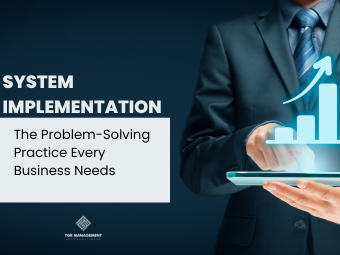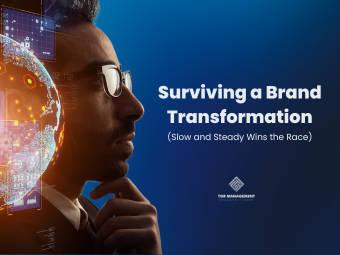
Last year, several technologies emerged that reshaped the way businesses operate. At the top of this list was AI – with a particular emphasis on Artificial Intelligence tools that are light-on-tech-jargon and user-friendly. This has already begun to reshape the way we see businesses operate.
This transformation is evident in the widespread use of user-friendly, no-code AI platforms that enhance efficiency without requiring a master’s degree in IT. Increasingly, the strategic investment in AI has revolutionized business communication, the creation of assets, and data analysis. Additionally, AI-driven analytics tools simplify complex decision-making processes. Suddenly, businesses can get more done in a day than ever before.
But the real question that’s on my mind, and the mind of many, is not just how this technology has already evolved in 2023 but how the Evolution of AI will continue in 2024. After some research, and reading through various predictions, I have a few ideas of my own!
Pervasive AI Integration

Let’s start with the obvious – more AI integration. As I already said, integrating artificial intelligence (AI) and machine learning revolutionizes strategic and operational approaches. Raisin’s journey in the savings marketplace exemplifies this trend, where AI and machine learning have become central to understanding customer preferences.
AI has allowed Raisen to analyze extensive data sets (or big data, as some call it), allowing them to optimize their banking app’s product recommendations. The result? They now boast an 18% boost in conversion rates.
Raisin’s experience reflects a broader shift among business leaders and CIOs who recognize AI’s essential roles in enhancing customer experiences and operational efficiency. This boom in AI innovation is expected to continue in 2024, but it may face some limitations.
AI is only as good at the technology available, and it seems there may be some limitations with chip manufacturing. While hardware constraints may put a limitation on how much AI implementation can be done, so it seems a practical approach to AI – implementing where it makes sense to implement, as opposed to going full steam ahead, will be your best bet to finding success.
Increased AI Spending

Source: Midjourney
How much do you believe we’ve spent on AI this year? I had a few guesses, but the actual number is impressive. The International Data Corporation (IDC) reveals that global spending on AI, including software, hardware, and services, is estimated at a staggering $154 billion. That’s a leap of 26.9%
from the previous year, signaling AI’s deepening integration into various products and services.
This is predicted just to be the start. We’re seeing predictions of an even steeper climb in AI investments. The numbers are speaking volumes: IDC FutureScape predicts that by 2027, we’ll be at $500 billion in AI investments.
AI technology has grown beyond an optional add-on or an exciting technology. Businesses have been and will continue to invest heavily in this technology – spurred on by competition and tempered only by hardware constraints.
As for how AI will be a driving force for innovation, we’ve already got some predictions.
AI as a Driver of Innovation

AI’s transformative impact as a driver of innovation is evident across sectors, with organizations like the National Basketball Association (NBA), Heineken, and the London Stock Exchange Group (LSEG) leveraging AI to innovate and streamline operations.
The NBA’s partnership with Microsoft to leverage cloud and AI technologies significantly increased NBA League Pass subscribers. It tripled the video views on the NBA App, evidencing the power of AI in personalizing and revolutionizing customer engagement.
In the same vein as the NBA’s innovative use of AI, Heineken is also embracing this technology to revolutionize its operations. Their deployment of natural language processing for creating internal chatbots is a breakthrough in the brewing industry. This move streamlines their corporate processes, saving time for their team members and fostering an environment ripe for creative and impactful problem-solving.
Equally transformative is the partnership between Microsoft and the London Stock Exchange Group (LSEG). By weaving sophisticated analytics and advanced modeling into its operations, LSEG is reimagining the future of global finance.
These are all examples of how just one tech giant (Microsoft) is already partnering with major corporations and organizations to spearhead the implementation of AI into everyday use.
There are also predictions about it’s impact on IT operations, with reported improvements of up to 40% in software development. This would, of course, go hand-in-hand with a growing trend we see brand-specific AI models – personalized software and engines explicitly designed for your business needs.
Of course, there is one way to integrate AI that has been at the forefront of everyone’s mind.
Inescapable Generative AI

Whether it’s ChatGPT, Dal-i, Content-At-Scale, Midjourney – or any of the many different examples of Generative AI in the creative space, chances are you’ve heard something about this particular form of AI. But what I find most interesting about these and lesser-known generative AI tools is their use at almost every level of business.
Salesforce has done a Generative AI Snapshot Research Series, which surveyed over 4,000 workers across various sectors. IT, marketing, sales, and service were the four areas that stood out – and the findings were intriguing. widespread utilization of GenAI, with 73% of participants in India using it, contrasted with 49% in Australia, 45% in the U.S., and 29% in the UK. This technology primarily appealed to Millennials and Gen Z professionals, who leveraged GenAI to automate mundane tasks and enhance workplace communication.
There are safety concerns, responsible use, and how to move forward when integrating technology. But despite these concerns, it doesn’t seem like the use of generative AI will slow down. Deeper integration, broader applications – and an increased reliance on unstructured data sets push at the need for a Chief AI Officer (CAIO) in organizations.
A Big Year for Ahead for the Evolution of AI
These are just a few drops in the bucket of how AI will continue to be a huge part of businesses operating in 2024. If you’re intimidated, you’re not alone. AI represents not one new technology but a plethora of new technologies and new ways to integrate them into your business.
My best advice is that if you haven’t already started looking at how to integrate AI automation into your business safely and responsibly, start now!
Tiffany Rosik, founder and CEO of TGR Management Consulting, advises Fortune 1000 companies on aligning business and technology initiatives to achieve growth. Tiffany goes beyond project best practices by coaching Project Team Leaders on team dynamics and techniques to establish a self-sustaining model that creates a consistent experience and produces results. Connect or follow Tiffany Rosik on LinkedIn.




